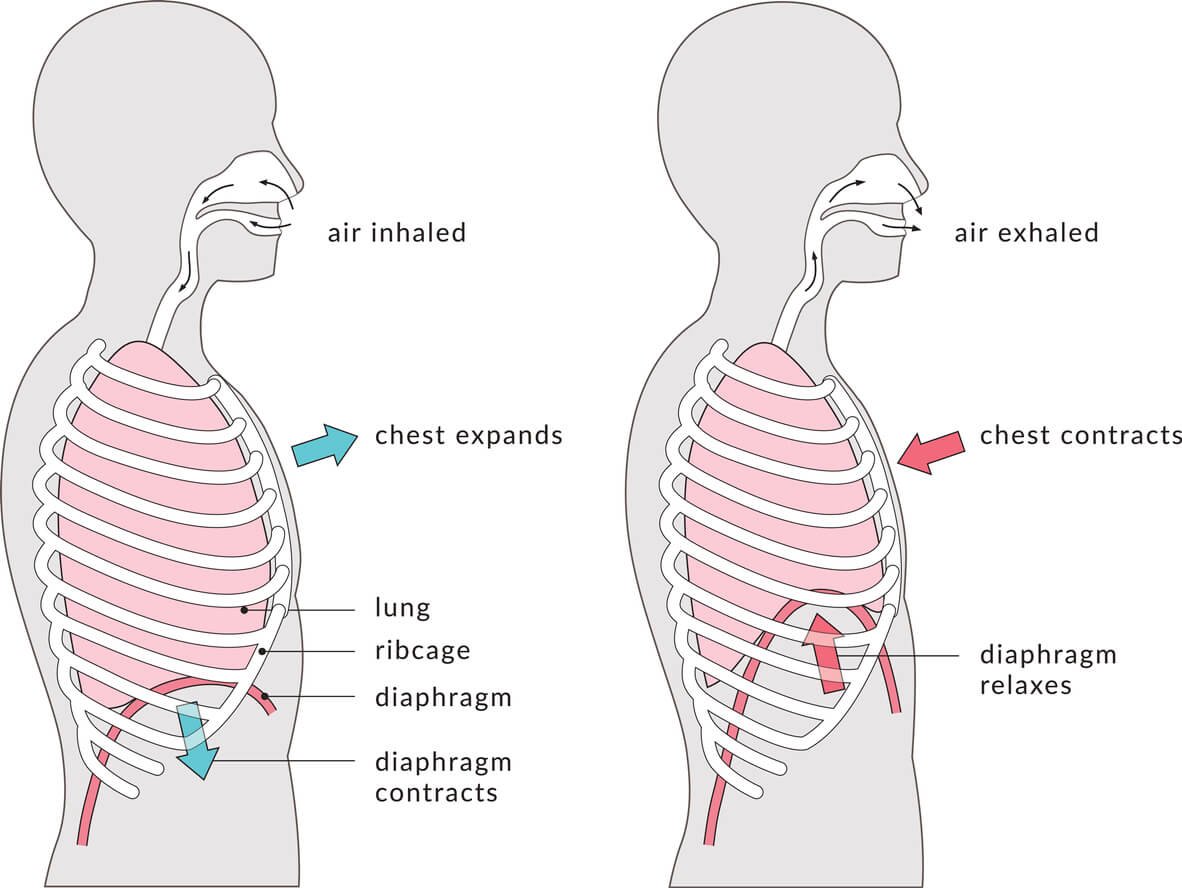How does yoga breathing work?
We all breathe. All day. Every day. Without even realizing we are breathing. It just…happens! Without it, obviously, we cease to exist.
Yet, research has proven again and again what the Eastern health traditions have suggested for centuries: the quality of our breath has a profound impact on our physical and mental health. When we breathe well, taking full deep breaths and bringing oxygen to the bottom of the lungs - we create the foundation for optimal health on all levels. And when we don’t; when our breath is constricted or shallow, day in and day out – we lay the foundation for illnesses such as heart disease and high blood pressure.
There are three things working together to make it possible for you to draw breath: the lungs, the diaphragm, and the intercostal muscles.
When you breathe in, your diaphragm contracts downwards towards your belly. That allows your lungs to expand, creating room in the chest cavity for oxygen. The job of the intercostal muscles, which run in between your ribs, is to help the chest cavity expand.
To breathe out, the diaphragm relaxes back to its original state, causing the lungs and chest cavity to contract and expel carbon dioxide. When the breath is shallow, the oxygen fails to make it all the way down into the bottom part of the lungs, which is where many of the small blood vessels that deliver oxygen to your cells live. This is the reason behind why breathing deeply can help slow your heart rate and stabilize your blood pressure.
In yoga, there is a lot of emphasis on “belly” breathing, which is the process of allowing the belly to expand outwards with each inhalation in order to fully draw the oxygen to the deepest parts of the lungs. Clinicians and researchers have said that belly breathing, also known as diaphragmatic breathing, is technically the “correct” way to breathe. As you inhale and take in air, your belly should come outward, allowing your lungs to open to receive the oxygen. On the exhale, your belly relaxes back in and the rib cage contracts. This process optimally engages the diaphragm muscle and ensures the lungs receive the maximum amount of oxygen.
You can see the whole process in the diagram below.
(Reference: https://getvipcare.com/blog/proper-breathing-how-you-might-be-doing-it-wrong/)
Breathing fully and deeply has the potential of energizing the body; bringing clarity to the mind by allowing optimal blood flow in the brain; calming the racing thoughts; and stabilizing the emotions.
Deep, slow, consistent breaths have the capacity to regulate the nervous system, lowering levels of cortisol and other stress hormones in the body, and switching from the “fight or flight” mode of the sympathetic nervous system into the parasympathetic “rest and digest” nervous system, which brings a greater sense of calm, optimism, and well being.
There are several breathwork techniques in yoga that involve directing the breath, sending it into various parts of the breathing system, sometimes elongating or shortening it, in order to have specific effects on the body and mind, and to enhance the breath to take full advantage of the benefits of full breaths..

